But if you’re sharing your home
with one, or more than one, it sure would help to know what’s going on
inside those fur-covered heads.
It’s especially important in terms of keeping your cat healthy.
Cats hide their illnesses very well, said Dr. Mark Newkirk, an Egg Harbor Township veterinarian.
“If your cat is more aloof by
nature, and a grazer with his food, it might be an extra day or two
until you realize the cat is not behaving normally. Then many times,
people wait to see if they are right, and another couple days go by.
Then, they call the doctor. Those few days can make a critical
difference sometimes, especially with internal disease,” Newkirk said.
Call your veterinarian if in doubt. Don’t wait, Newkirk said. Even healthy cats can be hard to
figure out. While there may be as many as 20 different dog signals that
people understand, there are far fewer universal cat behaviors that
people understand. Some cats reveal their personalities immediately. For
others, it may take a couple of weeks.
But you can get better at
speaking cat. With the help of Newkirk; Terri Werner, a volunteer and a
member of the board of Animal Outreach of Cape May County in West Cape
May; the Humane Society of the United States; and Scientific American
Mind magazine, we’ve put together a guide to help you figure out how
your pet is feeling and what he or she wants from you.
Ears
When ears are back, it means “leave me alone.” When they are forward, your cat is alert, listening and interested.
Purring
Usually a sign of contentment and
happiness, but there are instances when a cat will purr under distress
or when in pain, perhaps as a self soother or to attract your attention
so you will soothe them.
Meowing
Cats meow when they want
attention, but they may want that attention for a variety of reasons.
They may be hungry or want to sit in your lap. They may want to be
petted, or go outside or come back in.
Kneading
This is leftover behavior from
when cats were suckling as kittens. Young cats knead their mothers to
release milk. It is a sign of affection from a cat to a human. The cat
is harking back to a happy time, being nurtured by its mother.
Stretching
A sign of relaxation.
Tail
A tail that’s slashing back and
forth is another “leave me alone” signal. A happy, contented cat often
holds its tail straight up in the air.
Belly up
When a cat lies on its back with its belly exposed, this is the ultimate indicator of trust.
Licking
Cats groom themselves and each other with their tongues. A cat who licks his owner is saying, “You’re mine, and I love you.”
A soft nip
Overstimulation. If your cat nips you, she wants to be left alone.
Touching
When a cat reaches out a paw to touch a person’s face, it indicates affection for that person.
Whiskers
When whiskers are forward, it means a cat is friendly and curious.
Aggressive behavior
Cats signal aggression by
growling, hissing or spitting. This can also mean a cat is angry,
annoyed or frightened. Leave this cat alone.
Howling
A howl or yowl, sounding like a
loud, drawn-out meow, means a cat is in some kind of distress. In an
unneutered and unspayed cats, these sounds are part of mating behavior.
If elderly, the cat may be suffering from a cognitive disorder,
dementia, and may howl because of disorientation.
Miss (or Mr.) Independent
Some people wonder why cats are so independent. The simple answer is they were made that way, Newkirk said. “Dogs are pack animals, such as
their wild cousins, the wolves, are. Cats in the wild are solitary. They
have a territory to hunt and to live,” he said. “This is also why sometimes
introducing another cat to the household is difficult. Domesticated cats
have ‘learned’ from us that we are the source of food and shelter, and
so, depending on the individual’s personality, the age at which they
came into the home, and the attention and training received, they will
develop their own traits,” Newkirk said.
Some cats love to be with people.
Some cats acts as if they are just tolerating us. And they tend to like
best the person who feeds them twice a day.
The introduction of a new cat into the home can be tricky. “I usually advise getting a kitten from the shelter for your new cat, as a kitten is less ‘threatening’ to the current cat, who has staked out your home as territory,” Newkirk said.

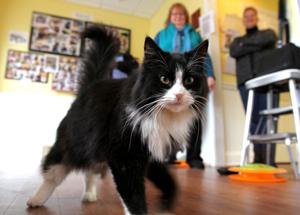
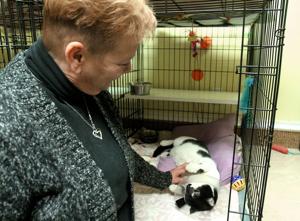
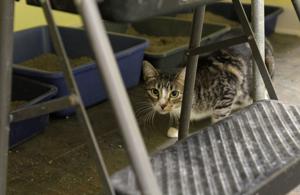
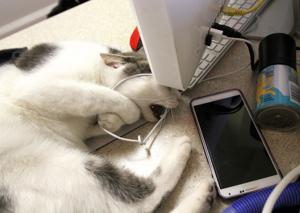

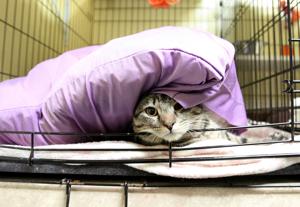
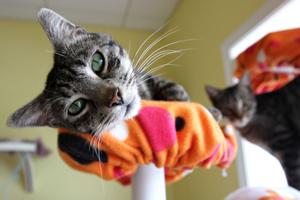
No comments:
Post a Comment